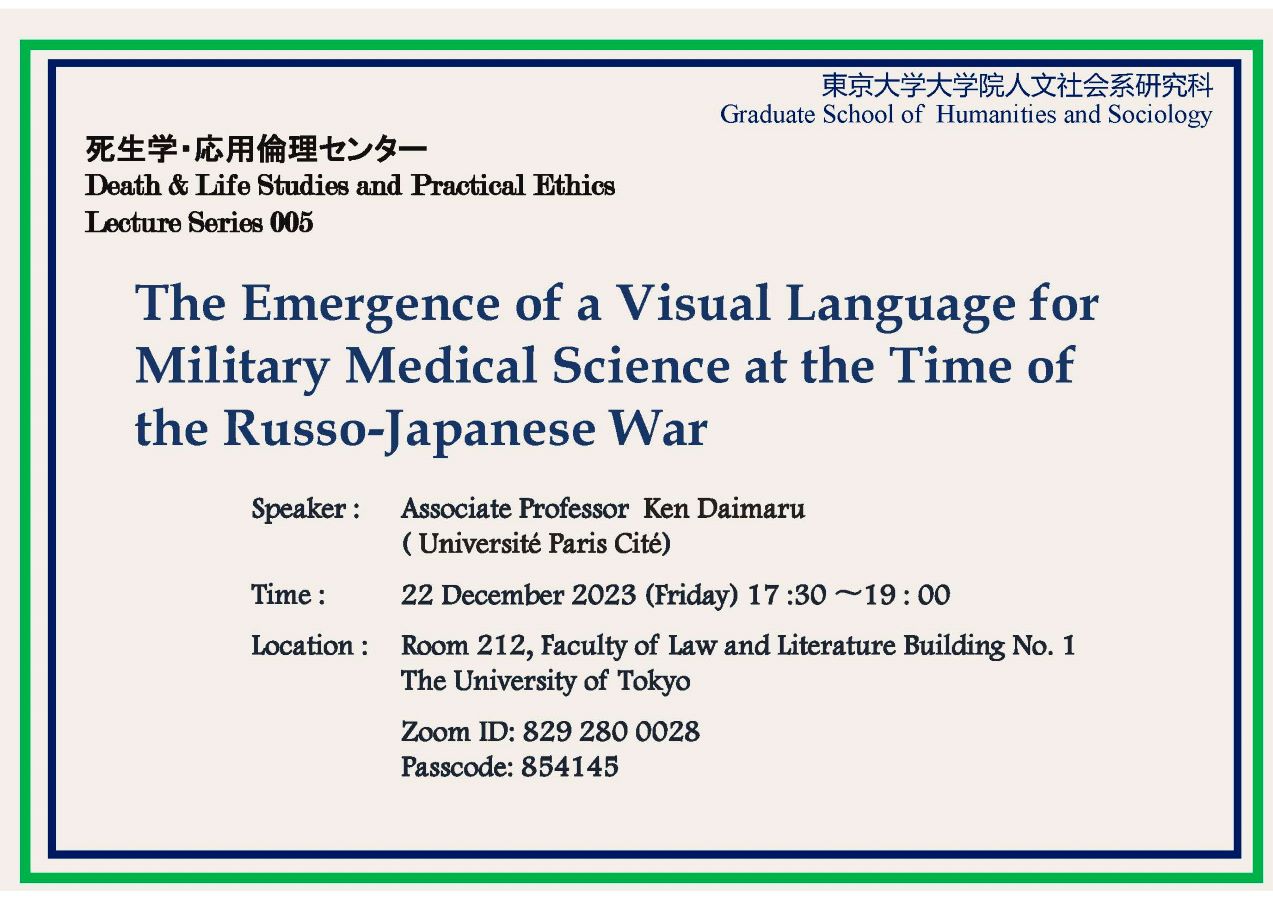Death & Life Studies and Practical Ethics Lecture Series
Number 005
Ken Daimaru, "The Emergence of a Visual Language for Military Medical Science
at the Time of the Russo-Japanese War"
【日時】2023年12月22日(金)17:30-19:00
【会場】 東京大学本郷キャンパス 文学部法文1号館212教室
【オンライン会場】Zoom ID: 829 280 0028
【参加について】参加無料・事前予約不要
【使用言語】英語(通訳なし)
【主催】東京大学大学院人文社会系研究科 死生学応用倫理研究室
【共催】東京大学大学院人文社会系研究科
【助成】布施学術基金
※この講演会は布施学術基金により助成を受けています。
Speaker: Ken Daimaru (Associate Professor, Université Paris Cité)
Ken Daimaru is an Associate Professor of Japanese history at University Paris Cité and co-director of Paris Graduate School of East Asian Studies. He has studied the history of the military health system in the context of Japan’s territorial expansion, from the 1850s to the beginning of the 20th century. He continues this research by focusing on the endemicity of diseases in the colonial and imperial Japanese context.
Abstract
In the turn of 20th century Japan, the capabilities of the administrative and military apparatus underwent profound changes, and so did the sanitary technologies of intervention. Based on a cross-perspective, in Europe and Japan, of the medical debate surrounding the changing ballistic properties of new firearms, this presentation examines the emergence and development of a group of doctors with expertise in “wound ballistics”. These professionals, within military institutions—associating the military, engineers, and doctors—, took part in anticipating bodily injuries and optimising the effects of firepower, with a twofold aim of curing and wounding. Medical expertise has not only been at the service of therapy, but also used to improve understanding of the vulnerability and lethal effects of weapons under development.
The history of the visual representation of war wounds enables us to shed new light on the dynamics of the socio-technical system affecting medical science in the early 20th century Japan. Not only does visual representation have the status of historical iconographic documentation, it has also been a major resource for doctors’ expertise, combining the paradigm of visibility (visible injuries and pathogens, the least visible of which can be the most deadly) and the paradigm of publicization, which involves the dissemination of representations, and the mediatization of humanitarianism. This presentation will argue that the growing importance of visual documentary techniques had thus a medical, political and strategic role that stemmed from the unique circumstances of the time of the Russo-Japanese War.


